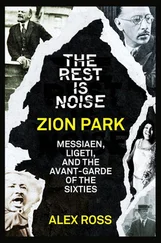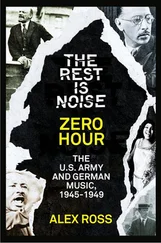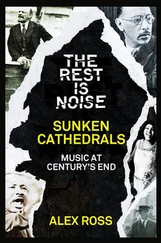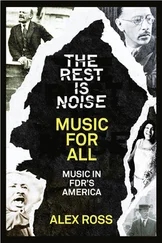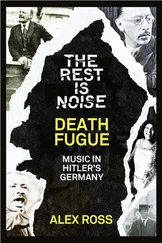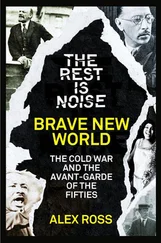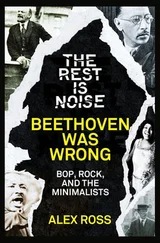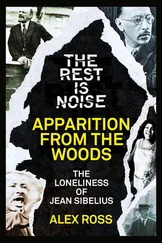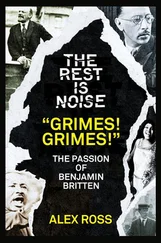There was a history of radical-left commitment in Shostakovich’s family, and his parents welcomed the Russian Revolution in its initial stages. But they were not Bolsheviks, and took fright when Lenin’s forces swept aside the more liberal government of Alexander Kerensky. Shostakovich, then eleven, imitated his parents’ politics. In the early weeks of the revolution he wrote a Funeral March in honor of fallen anti-tsarist fighters, but the following year he either renamed that piece or wrote a new one in memory of two early victims of Bolshevik terror. Even in prepubescence, it seems, he was ambiguous.
As a teenager, Shostakovich developed a taste for the iconoclastic poems of Mayakovsky, but not necessarily for the politics behind them. Only toward the end of his studies at the conservatory did Shostakovich finally come face-to-face with the absurdities of Soviet ideology: when a fellow student was asked to explain the socio-economic dimensions of the music of Chopin and Liszt, Shostakovich burst out laughing. Later, once he had become a prominent figure in the music-education system, Shostakovich would go out of his way to help students who flailed about when confronted with the political portions of the syllabus. At one oral exam, Shostakovich found himself sitting beneath a large poster that said, “ ‘Art belongs to the People.’—V. I. Lenin.” With a helpful upward tilt of the head, he posed the question “To whom does art belong?”
Shostakovich was never politically naive. While still a student in Petrograd, or Leningrad, as it was renamed in 1924, the composer gained an influential ally in Mikhail Tukhachevsky, a Red Army hero who was infamous in Tambov Province for having employed poison gas against anti-Bolshevik peasants. According to Shostakovich’s friend and chronicler Isaak Glikman, Tukhachevsky was “a man of great education and intelligence” who assiduously attended concerts, played violin, and made instruments by hand. He offered to find the young composer a room and a job in Moscow. Fortunately, perhaps, in view of Tukhachevsky’s eventual fate in the Terror, Shostakovich elected to remain in his home city.
Shostakovich’s youthful assurance blazed forth in his First Symphony, which the Leningrad Philharmonic introduced to frenetic applause on May 12, 1926. It is a work of unusually gripping narrative drive, careening from one vertiginous climax to the next. The musical language is mobile and flexible, making intermittent use of a system that the Russian theorist Boleslav Yavorsky had set forth in his 1908 book, The Construction of Musical Speech, whereby various modes, ranging from the familiar diatonic scale to Rimsky’s octatonic scale, and so forth, are played off each other. The symphony quickly found an international audience, and none other than Alban Berg wrote the composer a congratulatory letter.
By way of reward, Shostakovich received a well-paying commission from the Department of Agitation and Propaganda of the State Publishers’ Music Section for a grand choral-orchestral work to honor the tenth anniversary of the October Revolution. The piece was initially titled To October, and later became the Second Symphony. The opening section evokes prerevolutionary days with a snapshot of economic chaos: the strings are divided into seven parts, each moving in an independent rhythm. A little later nine caterwauling winds go every which way, perhaps representing the Silver Age intellectuals. Then a factory whistle (F-sharp) signals the arrival of Bolsheviks, and high-modern complexity gives way to elemental hymns. Although the text is banal, Shostakovich whips up a militant frenzy that anticipates the most potent of Hanns Eisler’s “battle songs.” The Third Symphony, subtitled “The First of May,” follows the same template, redeeming abstraction with bombast.
Despite the slow decline of Lunacharsky’s system, the Soviet musical scene remained varied and vibrant throughout the twenties. Without leaving Russia, Shostakovich was able to soak up various foreign influences, because the West came to him. Hindemith, Krenek, Berg, and Milhaud all paid visits to the new Soviet paradise; Der ferne Klang, Wozzeck, and Jonny spielt auf were staged; and Sam Wooding’s Negro revue Chocolate Kiddies toured Russia in 1926, giving Soviet avant-gardists a taste of jazz. On a brief visit to Berlin the following year, Shostakovich experienced the magic of Weimar culture first-hand. He was soon echoing the antisentimental, “objectivist” tone of Hindemith, Weill, Bartók, and middle-period Stravinsky. Shrill winds, curt brass, and jangling xylophones cut through the traditional luxuriousness of Russian strings.
Shostakovich also absorbed the unconventional narrative strategies of Soviet artists and theorists of the period, delighting in effects of discontinuity, montage, parody, self-conscious artificiality, and the “estrangement” of familiar styles and forms. Meyerhold, the titan of radical theater, recognized the young composer as a kindred spirit and asked him to write music for several of his productions—notably for his 1929 staging of Mayakovsky’s play The Bedbug.
In the same year, Shostakovich began what would turn out to be a lifelong collaboration with Grigori Kozintsev, who, together with Leonid Trauberg, had launched an avant-garde theater and film collective called Factory of the Eccentric Actor, or FEKS. In typical twenties fashion, FEKS aped the madcap pacing of the circus, the variety theater, and American movies, and Shostakovich followed suit. His score for Kozintsev and Trauberg’s silent film New Babylon, a politicized love story set in the period of the Paris Commune, avoided direct illustration of on-screen action and jarred the viewer with bizarre juxtapositions. For example, when the Communards are killed by firing squad at the end, Shosta kovich responds with a distorted version of the high-kicking can-can from Offenbach’s Orpheus in the Underworld. Such paradoxes fulfilled an idea that Sergei Eisenstein and colleagues had advanced in the summer of 1928: “The first experiments in sound [in film] must aim at a sharp discord with the visual images.”
Shostakovich’s radical period culminated in the opera The Nose, based on Nikolai Gogol’s story of an appendage that walks away from its owner and assumes an exalted social rank. Percussion interludes, trombone glissandos, and grotesque dance rhythms are deployed in what purports to be a mockery of bourgeois values, although the composer’s dependence on the stock devices of the Western avant-garde undercuts the message. If Shostakovich had moved to Berlin at this time, he might have had trouble standing out from the general throng of spiky young composers.
It was after the premiere of The Nose—in concert form, in June 1929—that Shostakovich found himself first accused of “formalism.” The word was Soviet shorthand for any style that smacked too strongly of Western modernism. The strike came from the Russian Association of Proletarian Musicians (RAPM), which had made it its mission to extirpate all remnants of bourgeois musical culture. The Nose vanished from Soviet stages, not to be seen again on Russian soil until 1974. Shostakovich buried himself in film and theater work, dutifully using his music to portray the eternal battle between good Soviets and their “class enemies.” The ballets The Golden Age and The Bolt expose, respectively, the decadence of Western competitors at a football match and the nefarious activities of “slackers,” “tipplers,” and “saboteurs.” The films The Golden Mountains and The Counterplan unmask capitalist bosses and wreckers of industry. Kozintsev and Trauberg’s film Alone follows a Leningrad schoolteacher into farthest Siberia, where landowning peasants are obstructing the Soviet experiment. Stalin approved these films for wide release in late 1931, and Shostakovich’s name probably first came to his attention at the screenings. The dictator is known to have loved “The Song of the Counterplan,” which went on to become one of the iconic melodies of the Soviet age.
Читать дальше

